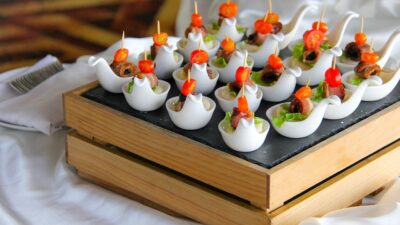In today’s culinary landscape, where Instagrammable meals often take precedence, the visual appeal of food has become as critical as its taste. "Plate to Palette" delves into the fascinating intersection of gastronomy and aesthetic perception, exploring the science that drives our appreciation for beautifully presented dishes.
The Psychology of Food Presentation
Food presentation is more than mere decoration; it plays a significant role in our overall dining experience. According to food psychologists, our perceptions of flavor and satisfaction can be heavily influenced by the aesthetics of what we eat. The human brain forms associations between colors, shapes, and dishes, creating a multi-sensory experience that can change our anticipation and enjoyment of a meal.
Color and Its Impact
Color is one of the most striking elements of food presentation. Colors are not just visually appealing; they also evoke emotional responses. For instance, vibrant colors like red and yellow are often associated with warmth and appetite stimulation, while greens evoke freshness and health. Studies have shown that colorful dishes can elicit higher ratings of taste and quality, as diverse colors imply a richer array of flavors.
Plating Techniques
Plating is an art form in its own right, often categorized into various techniques that enhance visual appeal. Here are a few popular methods:
-
The Rule of Thirds: Emulating photographic principles, chefs often use the rule of thirds to arrange food on the plate, creating a balanced and harmonious composition.
-
Height and Texture: Vertical stacking can add height, making dishes visually striking. Combining different textures—crispy, creamy, and chewy—can also keep the eyes engaged and enhance the overall experience.
- Contrast and Balance: Darker foods contrast well against lighter backgrounds, while similar colors can create a more monochromatic but elegant look. Balancing elements in terms of weight and color can create visual symmetry that is pleasing to the eye.
The Role of Ingredients
The choice of ingredients not only dictates flavor but also influences presentation. For example:
- Freshness: Fresh ingredients assume vibrant colors and beautiful textures, leading to more appealing presentations.
- Contrast: Pairing ingredients that contrast in color and texture can elevate a dish. Think of salmon with a crunchy green salad or a rich chocolate mousse accented with bright berry coulis.
Cultural Influences
Cultural factors also shape food presentation styles. For instance, Japanese cuisine emphasizes minimalism and balance through artistic arrangements, while French cuisine often leans toward elegance and grandeur. Understanding these cultural influences can enhance a chef’s approach to plating, allowing for a blend of tradition and creativity.
The Science of Flavor Perception
Interestingly, the visual cues from a well-plated dish can alter our perception of its flavor. Studies suggest that participants rate similarly flavored dishes as tasting better when they are visually appealing. This phenomenon is termed the "delboeuf illusion," where a well-presented dish can be perceived as more significant and tastier, regardless of its actual ingredients.
Conclusion
The journey from plate to palette encapsulates a blend of artistry, psychology, and science. In a world where dining is increasingly an experience to be shared and curated, understanding the visual appeal of food can enhance not just the consumption but the creation of culinary masterpieces.
As we continue to explore the boundaries of gastronomy, one thing remains clear: the aesthetic experience of food is an integral element of its enjoyment. Chefs and home cooks alike can leverage the science of visual appeal to make every meal not just a nourishment of the body but a feast for the eyes and the soul.



